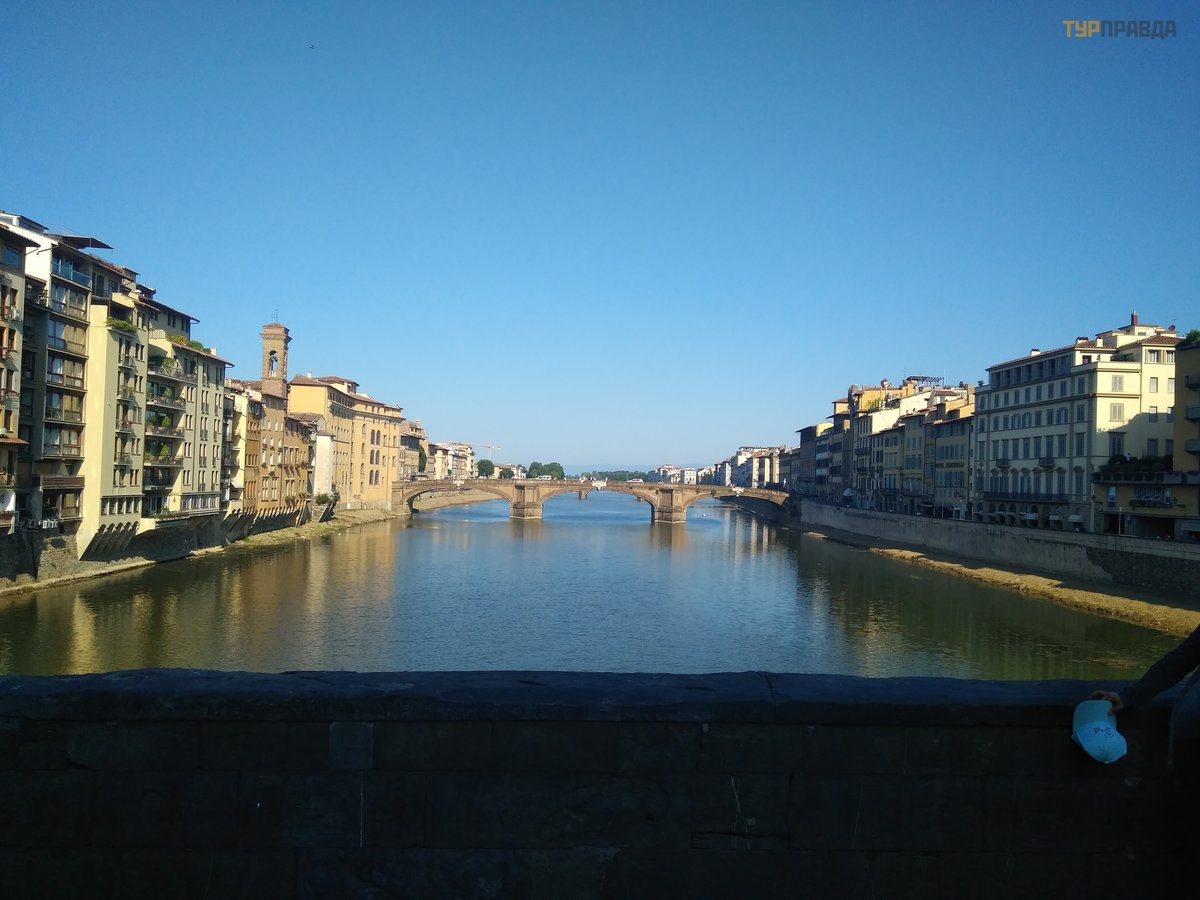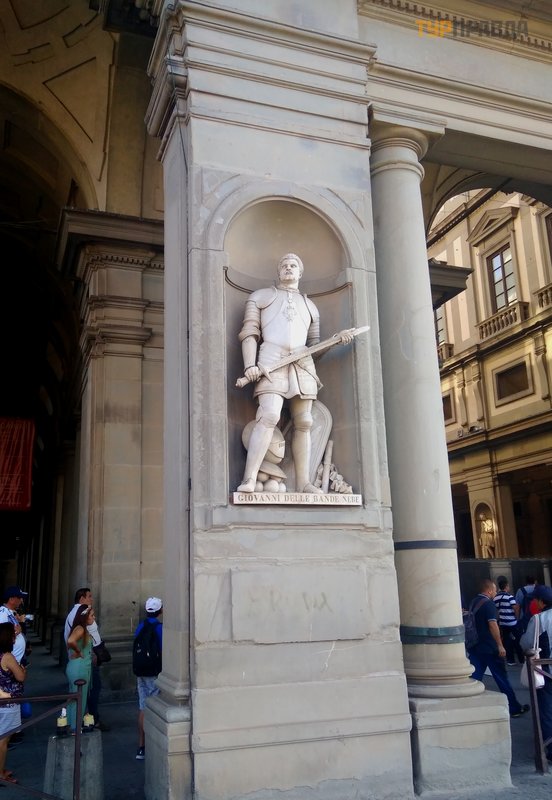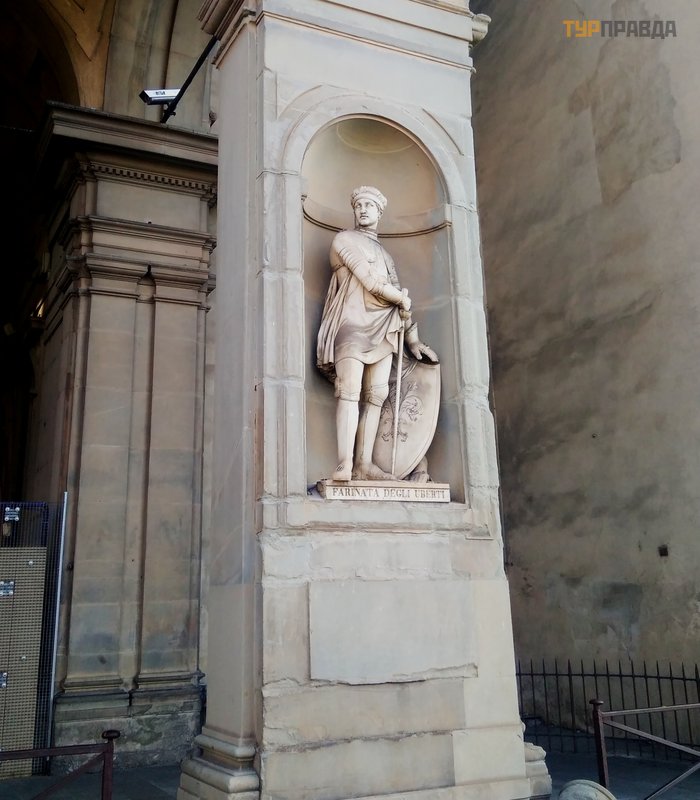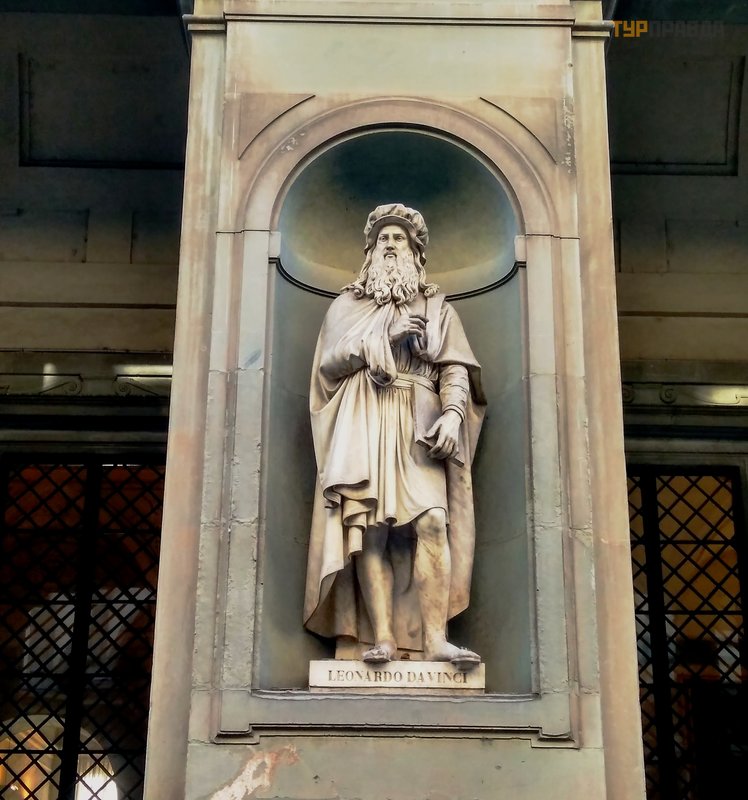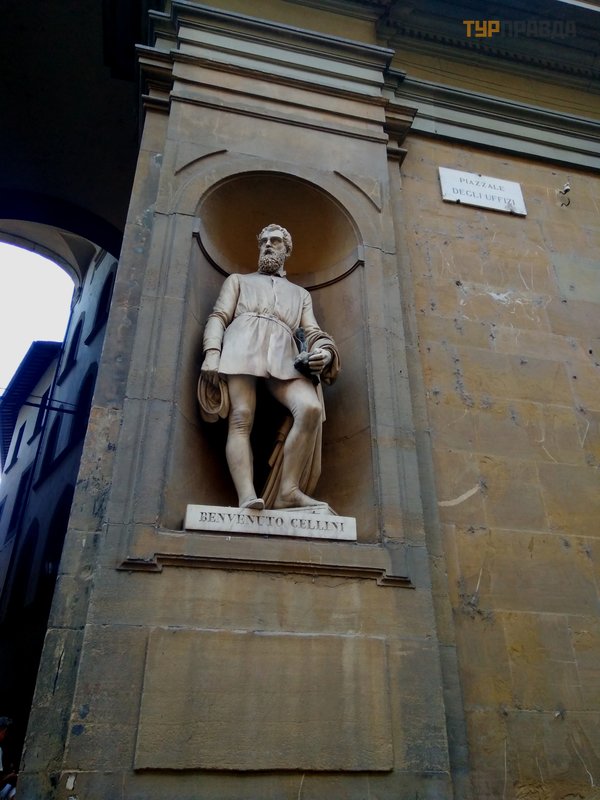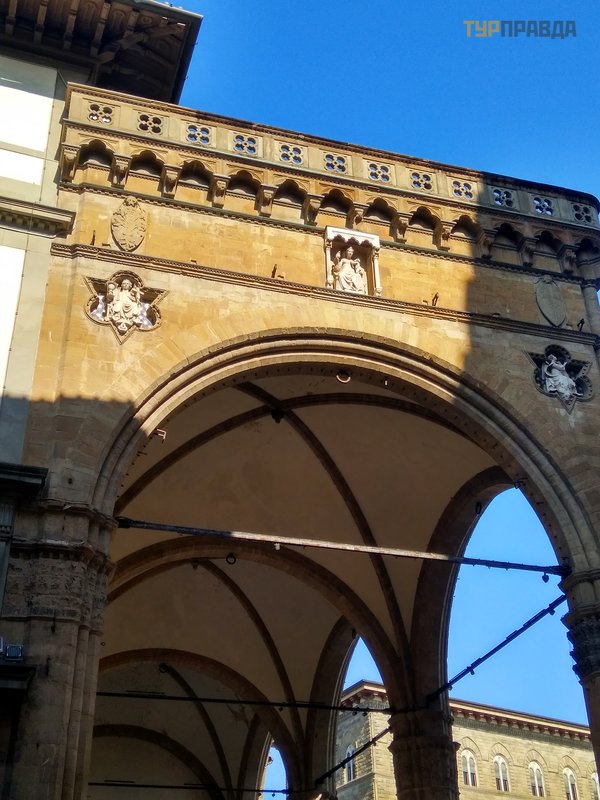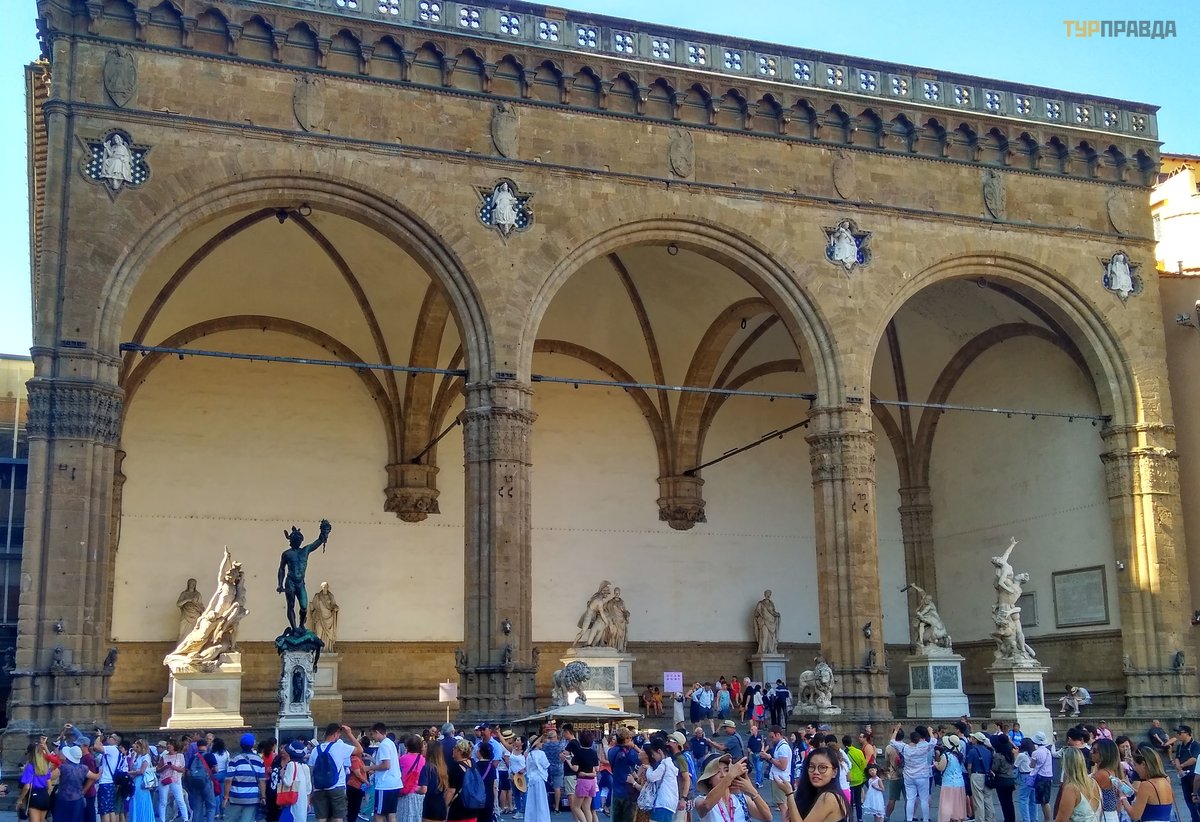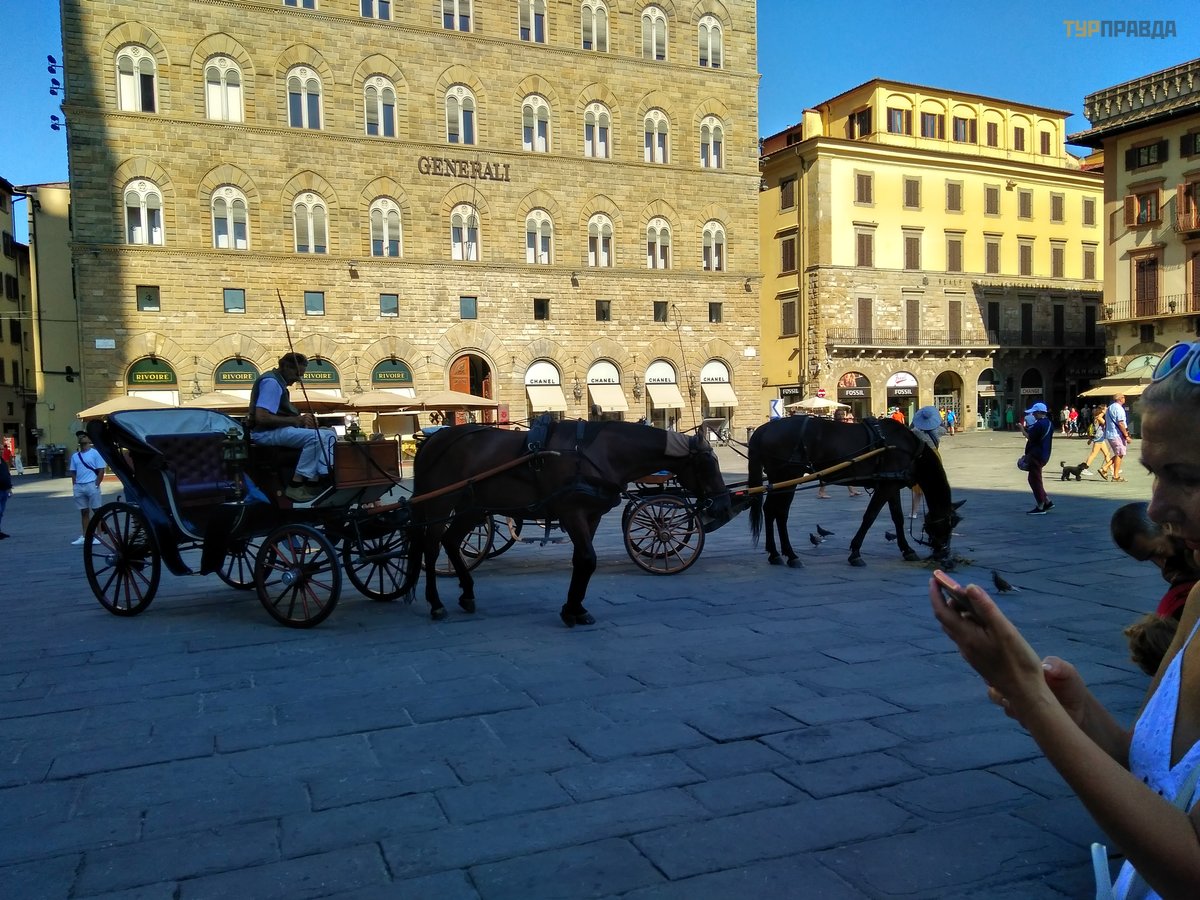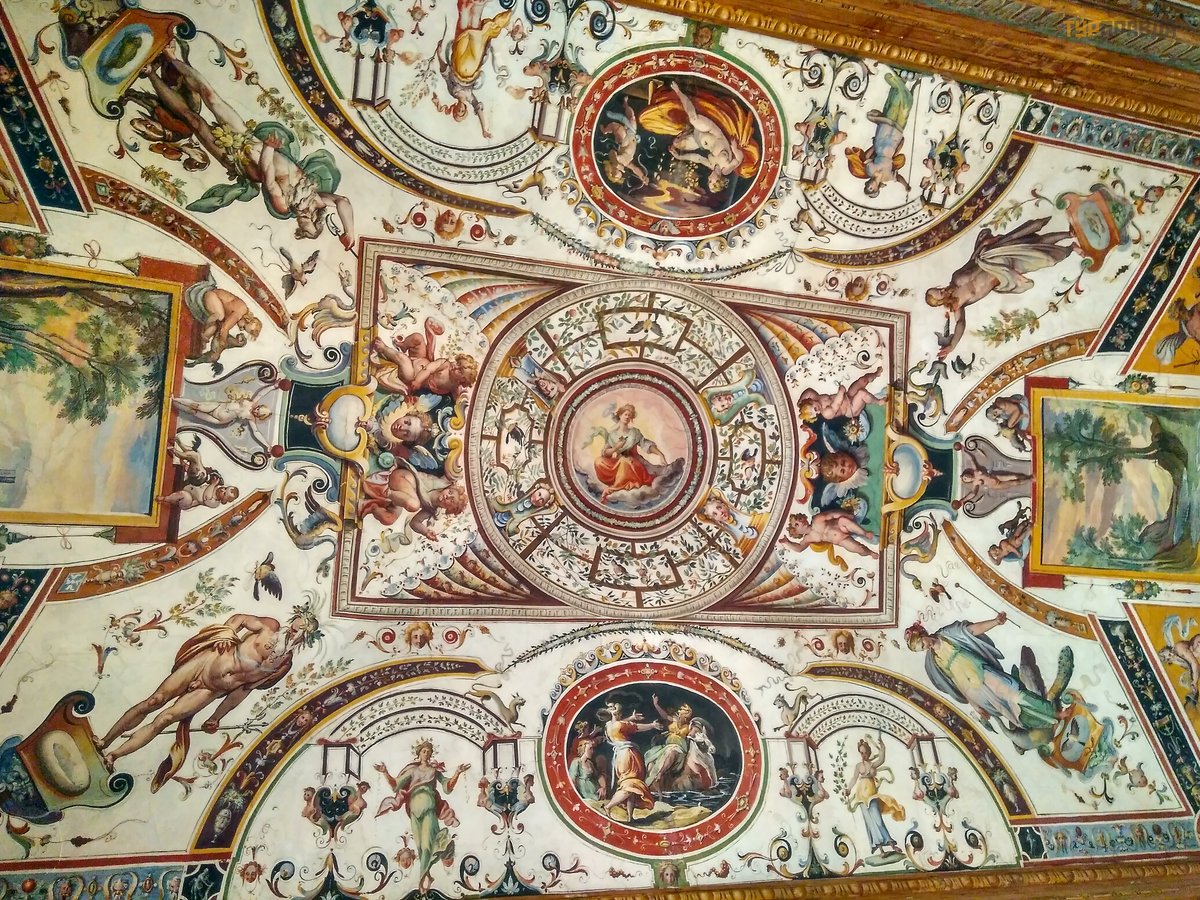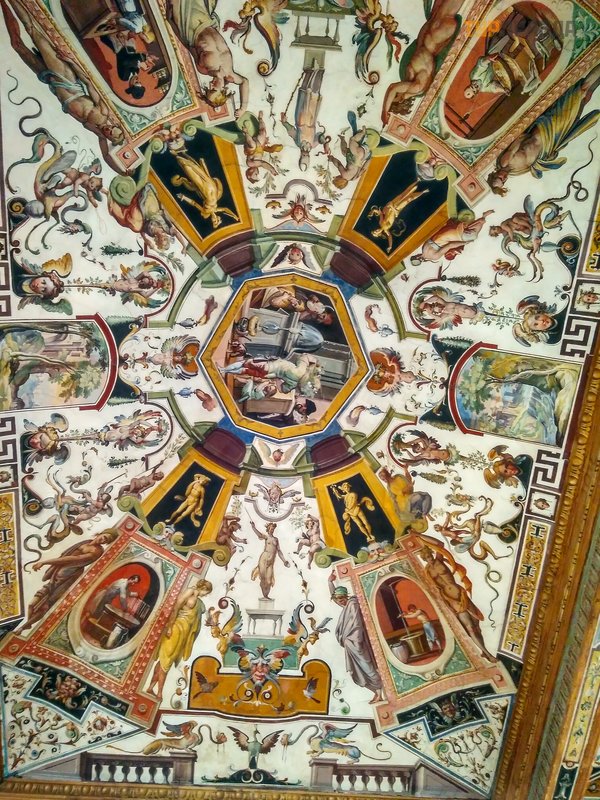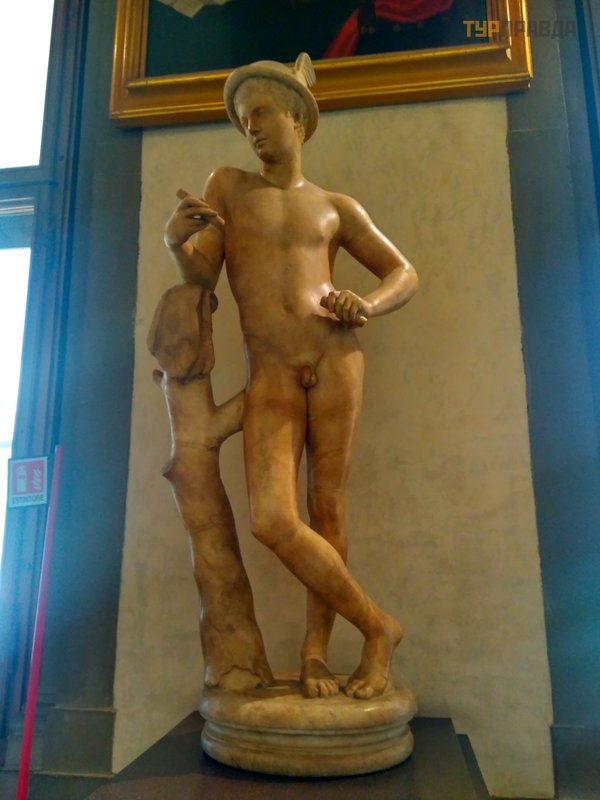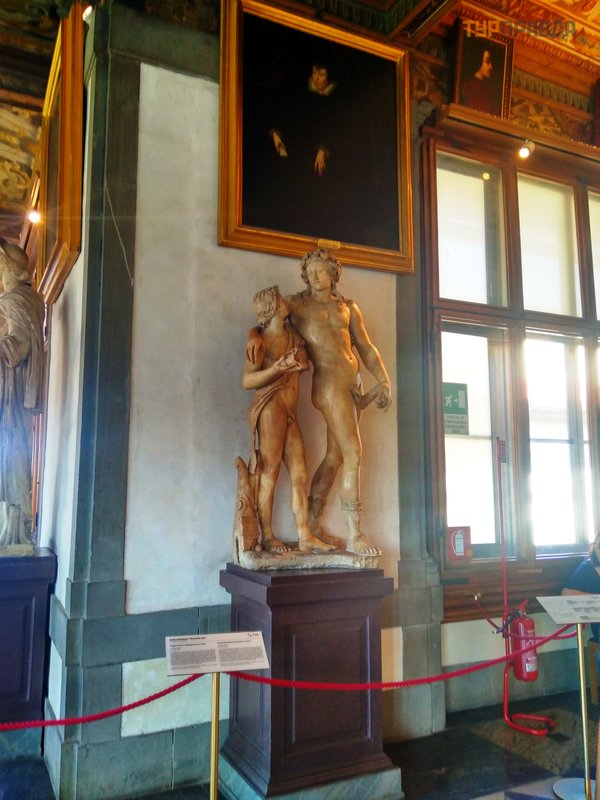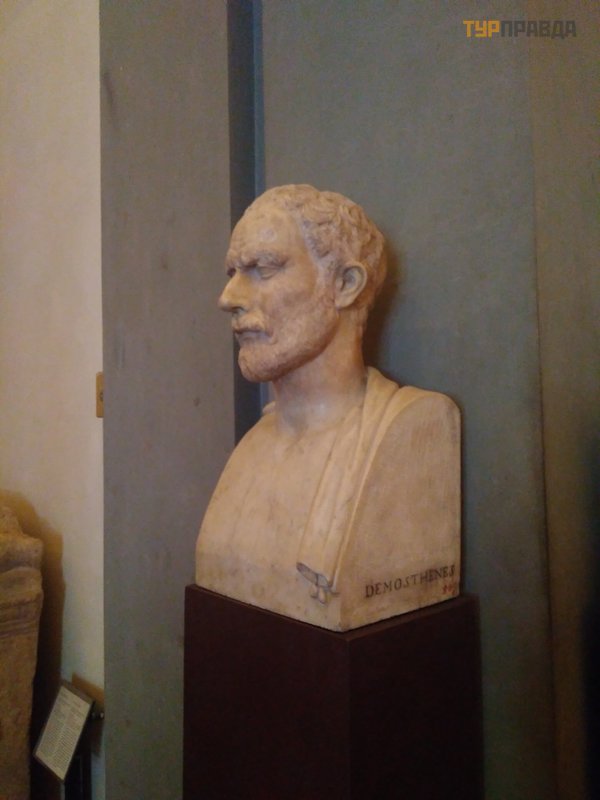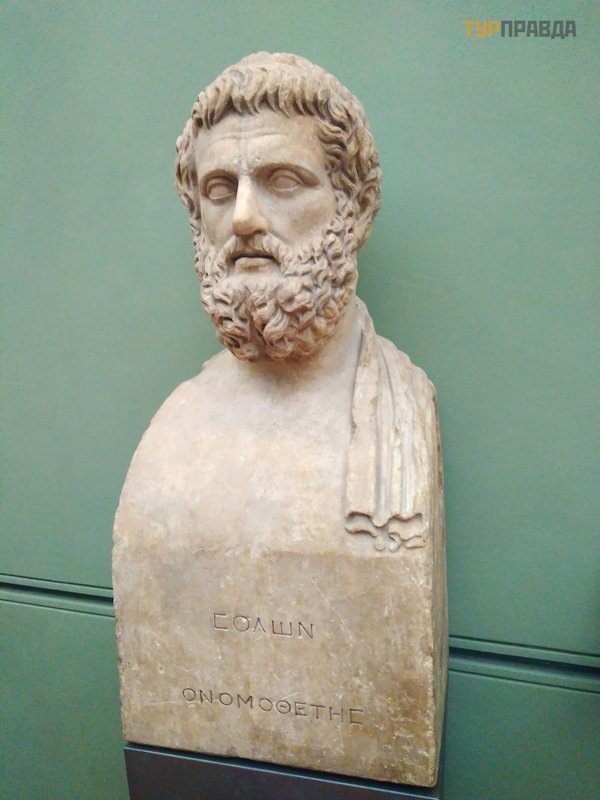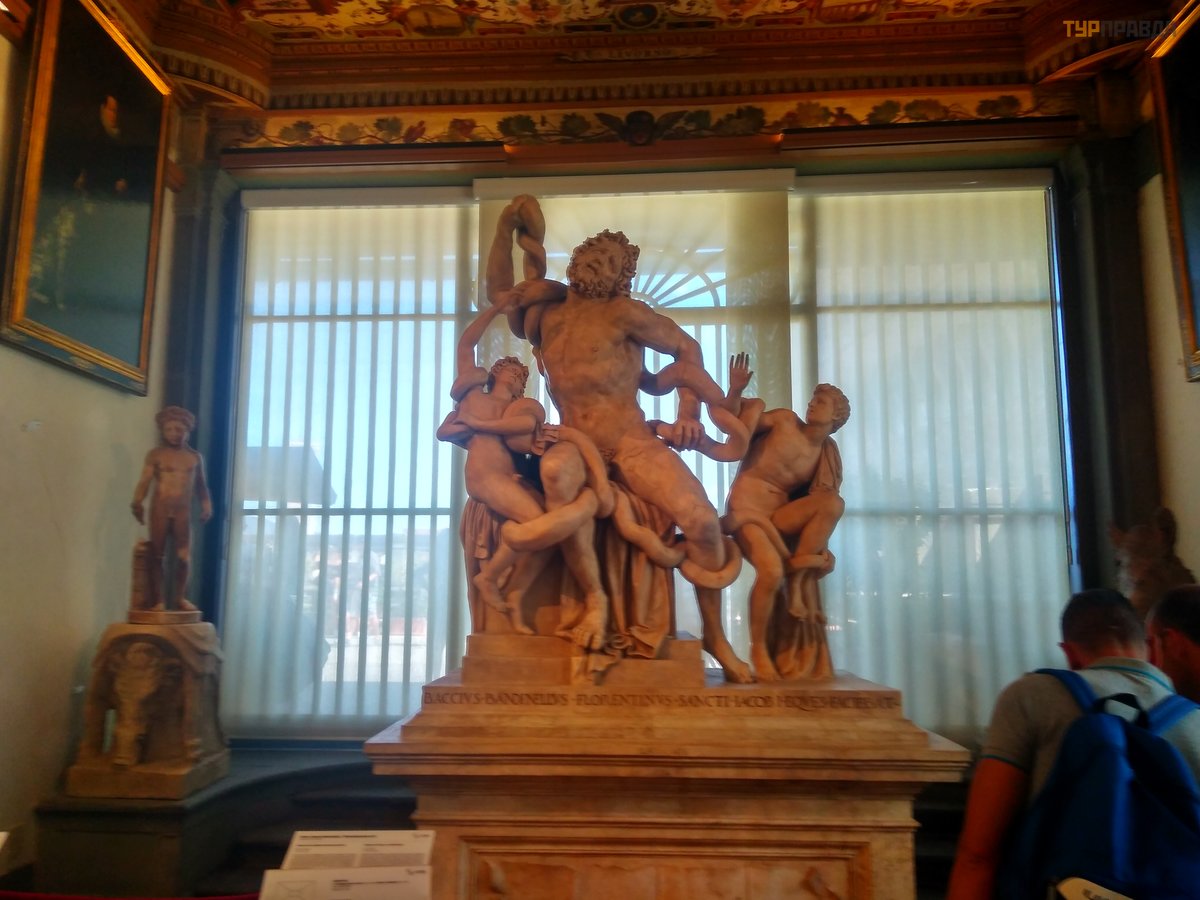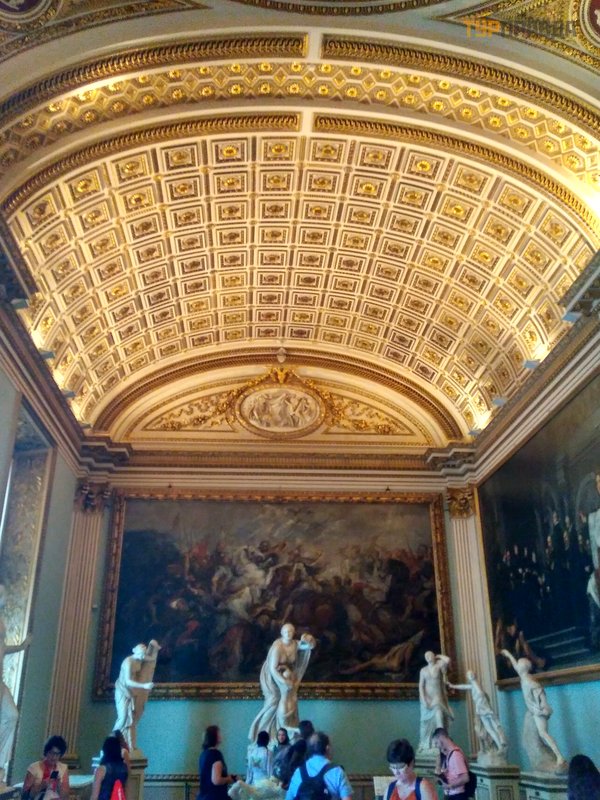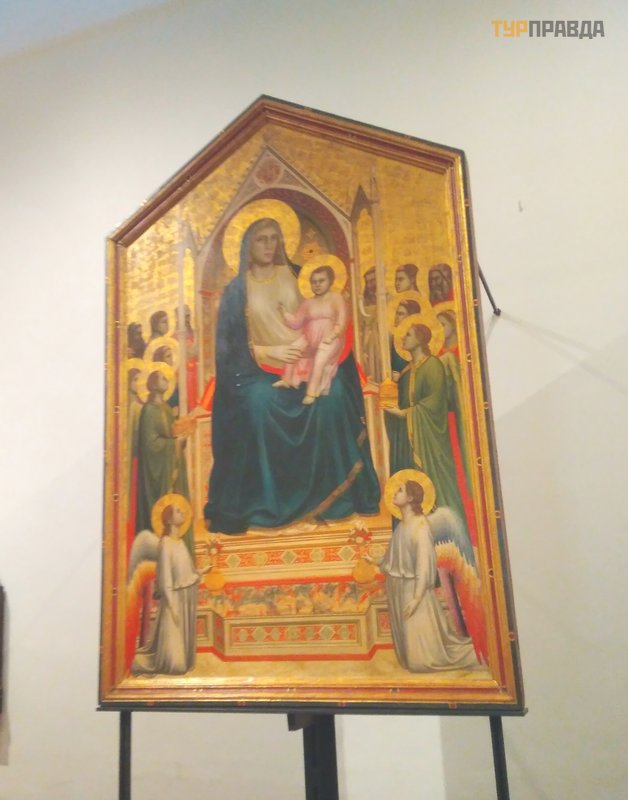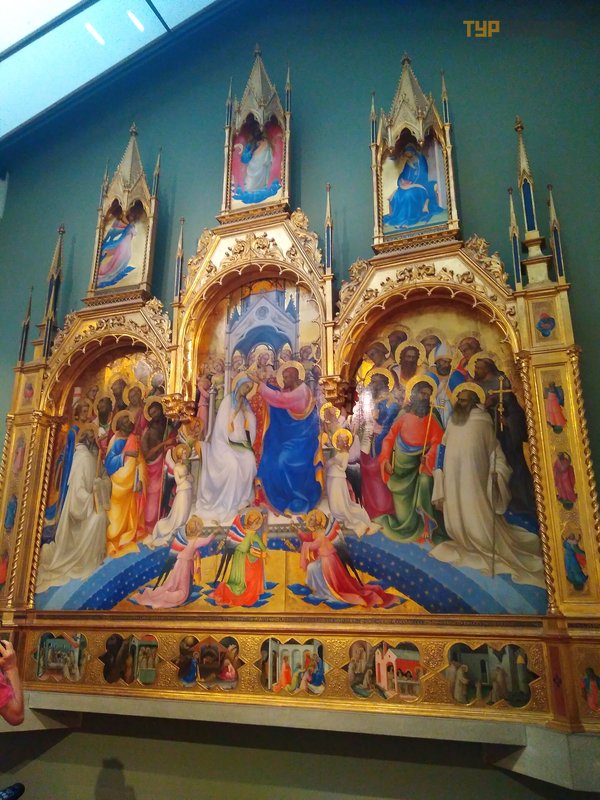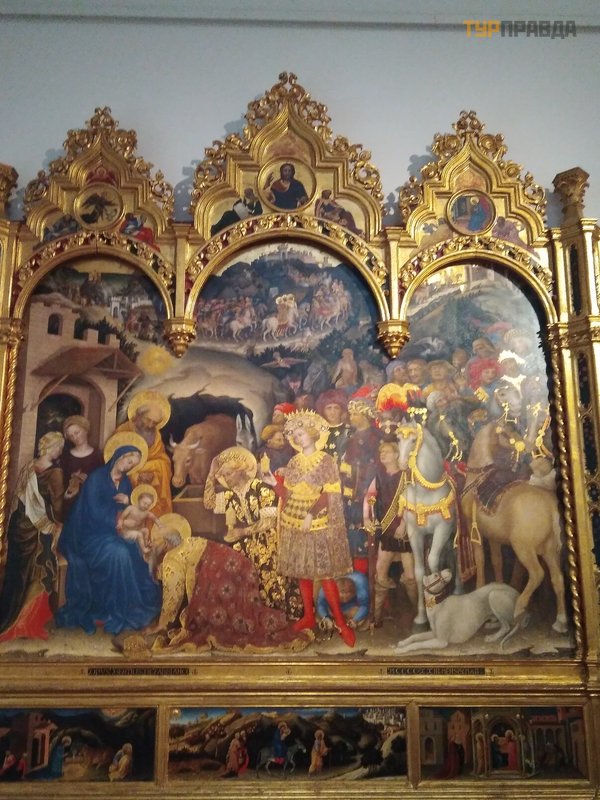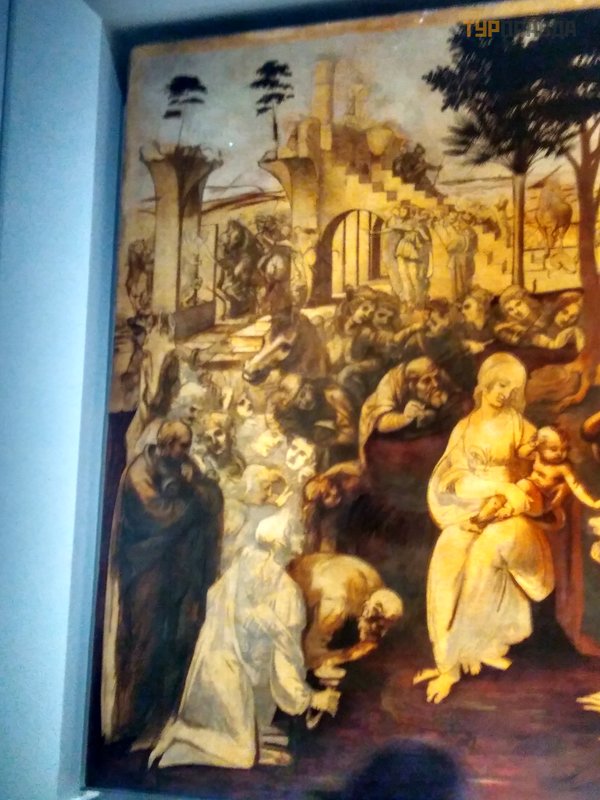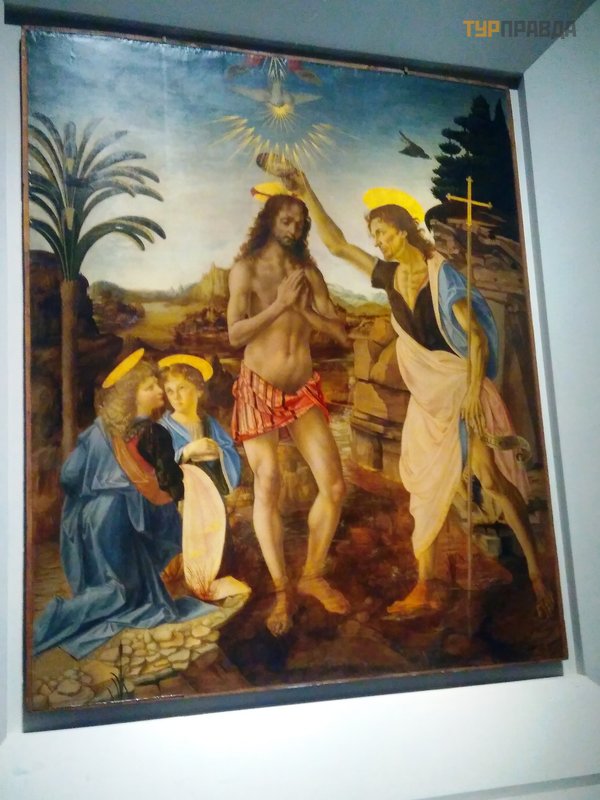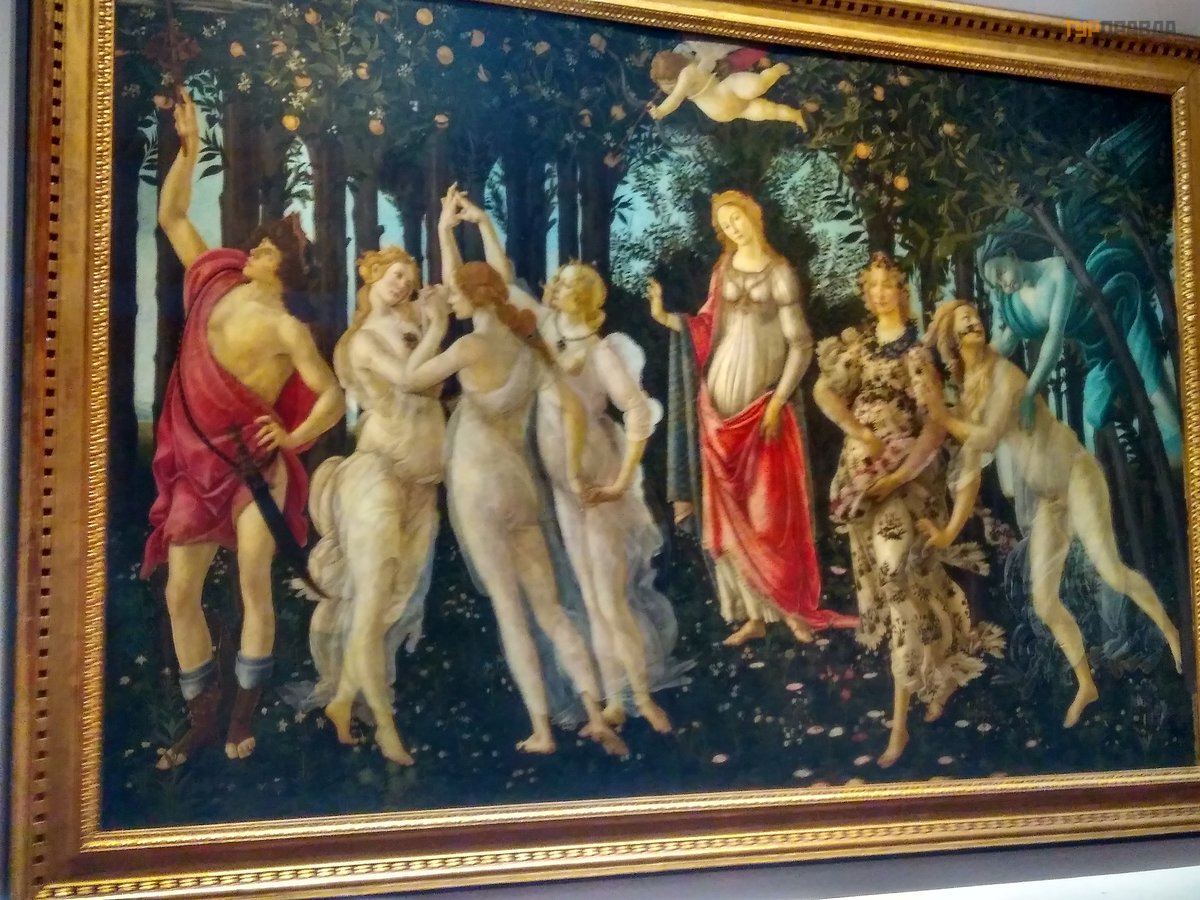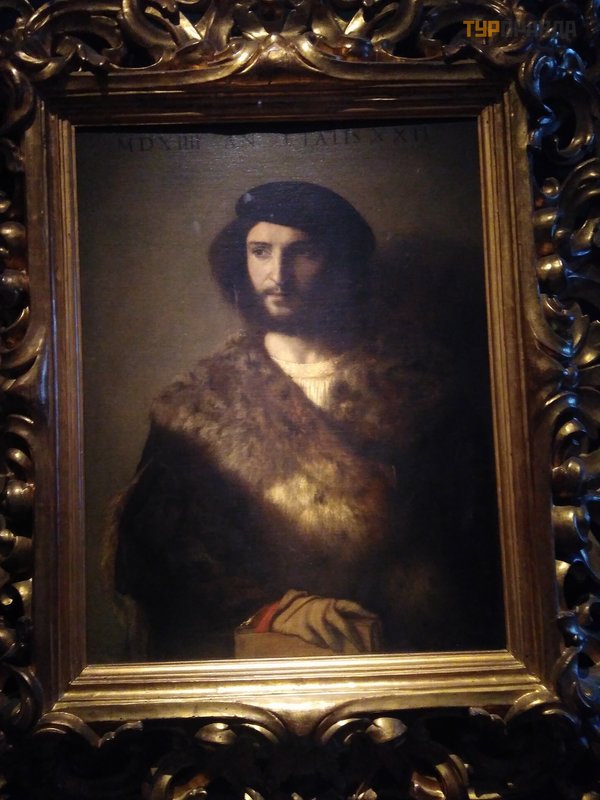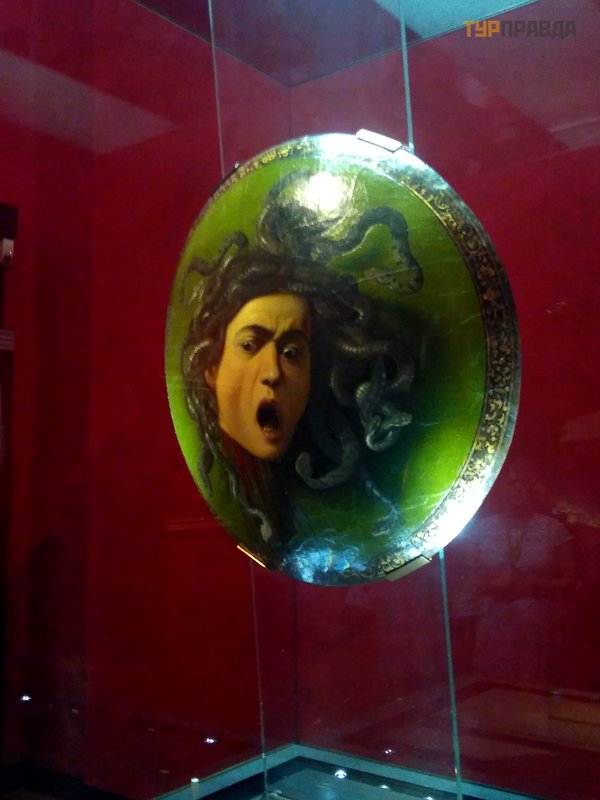Twenty-two days of one journey. Day sixteen. Part 1
Starthere >>>
We are going to the Uffizi Gallery (Uffizi - office in Italian), originally built as an office center, the entrance to which is booked and paid through the website https://www. visituffizi. org/it/ at 10 am, at the same time to the Boboli Gardens and Palazzo Pitti, where you can at any time for three days (for all 78 euros). If seeing the Uffizi is completely unbearable, go to the site and “walk” through its halls and corridors, I’m sure you will feel better.
We need to get to the Uffizi first, and at 9.15 we are already standing on the Ponte Vecchio and seeing the Santa Trinita bridge. . .
. . . closed jewelry stores, bust of Benvenuto Cellini. . .
. . . from the jewelers of Florence, whose products are sold in abundance in the shops. He became famous as a sculptor, musician, jeweler.
The ability to handle weapons and composure, along with the talent of a sculptor, helped create a masterpiece - a sculpture of Perseus who killed the Gorgon, but for what - it is not clear. He is on a par with the greatest creators of the Renaissance.
Here it is, the bridge:
We saw an advertisement for the sale of an apartment in it. 35 sq. m for 70 thousand euros - inexpensive, as for such a place.
A whole series of barred windows is the Vasari corridor that connects Palazzo Pitti and Palazzo Vecchio, along which the Duke of Medici walked unnoticed from everyone from his place of residence to his place of work. This corridor contains a gallery of over a thousand paintings, authentic self-portraits of great artists, but the entrance is closed to the public after the 1993 terrorist attack that destroyed dozens of paintings and damaged the building of the Uffizi Gallery.
Seeing Italy and the Uffizi masterpieces were the highlights of the trip.
Look into the faces of the Great. . .
 Niccolò Pisano, father of Italian sculpture and the great sculptor Giovanni Pisano
Niccolò Pisano, father of Italian sculpture and the great sculptor Giovanni Pisano
 Father of the Fatherland (Pater Patriae) Cosimo 1 Medici
Father of the Fatherland (Pater Patriae) Cosimo 1 Medici
whose sculptures are located in niches on the left and right, there are 28 of them in total, and they appeared in the 19th century, at the same time they were created.
Tickets in your pocket, with one eye you can look at Piazza della Signoria:
Half an hour left. We looked and did not have time by 10 o'clock, we were five minutes late, but there were few people, we went inside. Immediately, like a stork throwing its head back, "walked" along the ceiling.
There are about fifty halls with works by great masters, but the corridors also require attention.
 Remains of an Etruscan she-wolf
Remains of an Etruscan she-wolf
Ceilings, ancient Greek and Roman sculptures, portraits of famous and not so famous people, there is a portrait of Suleiman the Magnificent. Further, following the audience, I gradually immersed myself, even forgot that my wife was wandering somewhere - only they (the great creations of the Great Ones) and I, most of the photos did not turn out and were deleted. Everything that can be put on display, I post.
We started, as expected, from the 2nd hall. This is Giotto and his "Maesta" (image for the altar):
The beginning of the Renaissance in painting.
The Maestas and two other authors, Cimabue and Duccio, are in the same room:
Paintings of the latter are on display at the Siena Metropolitan Museum.
At 11.20 we went to visit Leonardo.
Here is a picture where the image of the first angel and the landscape in the distance was depicted by a student, and the teacher Verrocchio recognized his talent and, they say, broke his brushes for painting. The painting is called The Baptism of Christ.
Madonna Doni is the only painting in Florence by Michelangelo Buonarotti:
Spring by Sandro Botticelli:
It is considered the most important masterpiece of the Uffizi, like the Birth of Venus.
The world's largest collection of Titian paintings:
Located in the Uffizi.
Looking at this mess. . .
. . . felt sorry for the medieval men. Well, put a stick on your back, refuse sex, don't feed, don't pour, but that's it! Yes, and mother-in-law with maids connected.
We have never seen so many severed heads before. It is important that this picture...
. . . painted by a woman - Artemisia Gentileschi in the 17th century. And so, when you begin to study the complex and dramatic fate of this woman, the daughter of a famous artist, you come to the conclusion that such a plot is fully justified,
such thoughts were prompted by her men, namely Agostino Tassi, who abused her. In this picture, Artemisia herself holds the dagger and plunges it into the neck. The painting is called "Judith beheading Holofernes". The wife called the picture "The men got it. "
And so with each picture - look, think, study and understand that each plot reflects the life of the author or character, and in general the life of that era. The collection of Italian paintings ends in room 90, where Michelangelo Merisi, known as Caravaggio, and a wooden shield depicting the severed head of a Gorgon are presented.
Near this painting. . .
. . . I had to linger a little - I was looking for where the light was coming from. This miracle was created by Gerard van Honthorst and called "Adoration of the Child". You can't get away from this.
The Gallery has access to the balcony, where there is a cafe, a little expensive, but what can you do - art demands...
I am finishing my knowledge of painting and its history at the embryonic level, I hope I managed to entice and interest.
Continued here >>>

